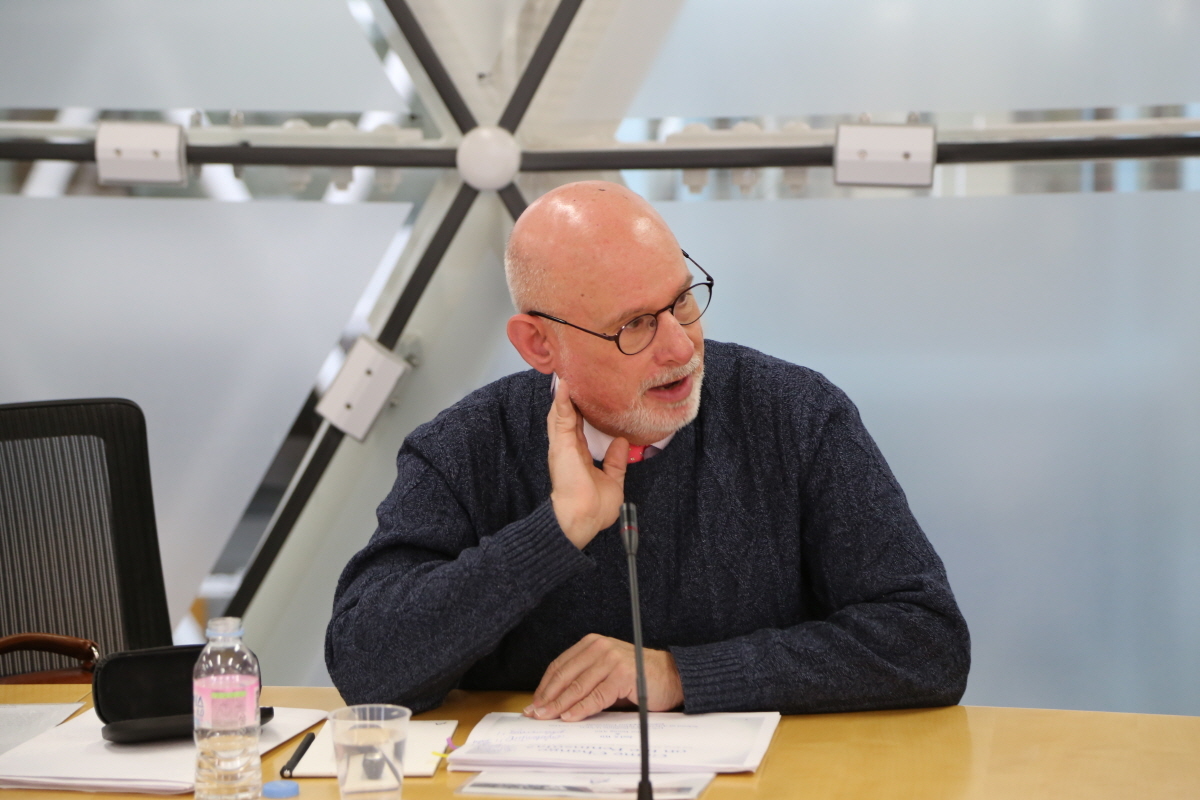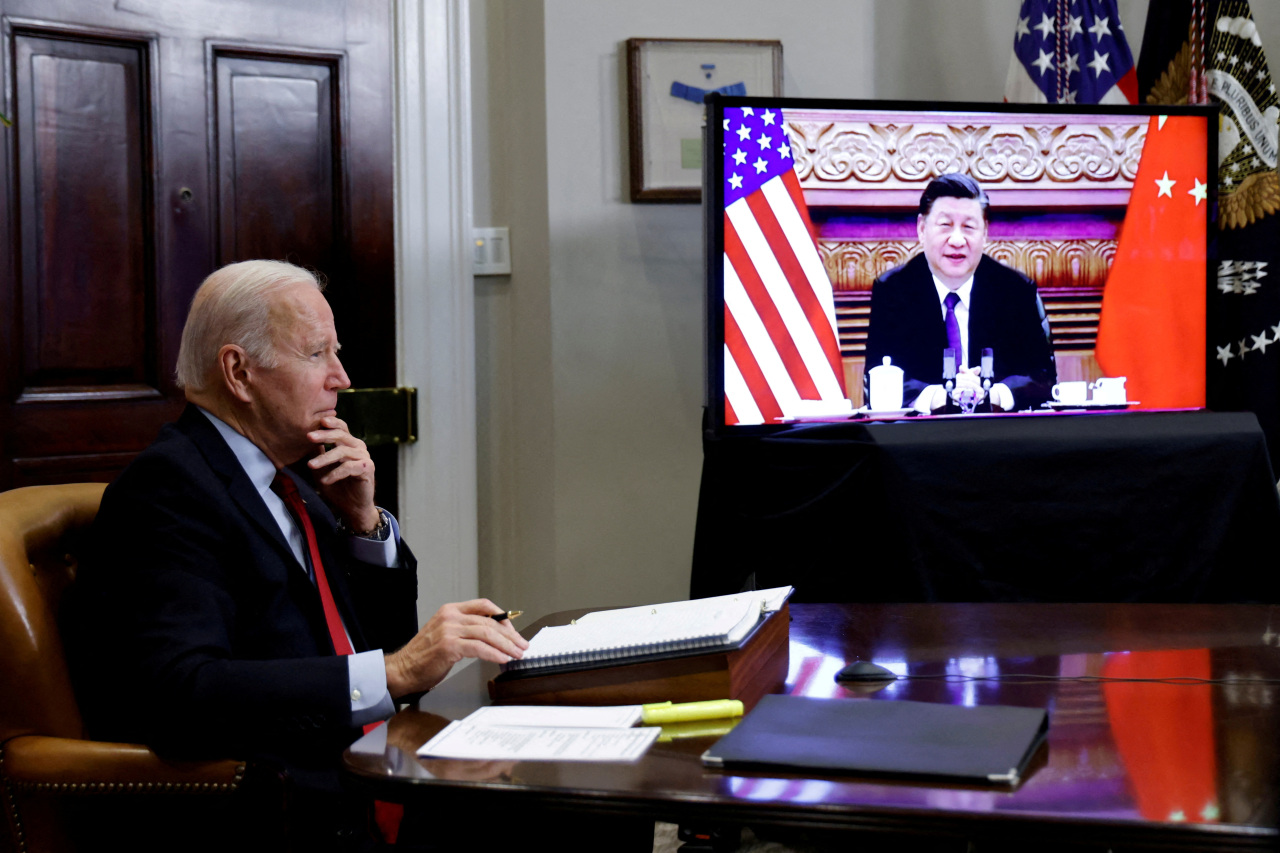[Herald Interview] Biden must alienate Pyongyang from Beijing for N.Korea policy to work
US, S. Korea should put more diplomatic efforts toward transforming relationship with N. Korea
By Ji Da-gyumPublished : Nov. 14, 2022 - 18:02

To resuscitate nuclear negotiations and get a step closer to a nuclear-free Korean Peninsula, he says the US first and foremost should alienate North Korea from China.
Wit said the Biden administration’s current North Korea policy is not “even close to the right track” to achieve the ultimate goal of complete denuclearization of the Korean Peninsula.
“It’s a strategy that’s based on past approaches that never worked. It’s a strategy based on making alliances stronger, which is of course important. I’m not saying it’s not,” Wit, who also serves as a distinguished fellow in Asian and security studies at the Stimson Center, said in an interview with The Korea Herald on Oct. 31.
“But that’s not going to solve the problem. So it has no chance of success.”
In essence, the current US strategy on North Korea has failed to take into account geopolitical dynamics and risks persisting on the Korean Peninsula and in Northeast Asia.
The US should reestablish its North Korea strategy to account for the impact of shifting geopolitical and security dynamics on North Korea’s strategic calculus and behaviors.
“The point is that a strategy needs to be devised. It, first and foremost, takes into account all the different factors, for example geopolitical factors,” Wit said. “Right now, we don’t have that at all. It’s not even close.”
Arms race and doctrine of preemptive strike
Wit underscored that Washington should consider key three external factors that have been increasing geopolitical complexity and volatility in the region when devising its North Korea strategy.
The closer alignment between North Korea and China is a paramount factor. The two have continued to be bound together as part of the structure of confrontation between a China-North Korea-Russia triangular alignment and South Korea-US-Japan trilateral cooperation has become entrenched in Northeast Asia.
North Korean state media have repeatedly highlighted the importance of strengthening strategic cooperation between China and North Korea against “hostile forces.” For instance, the Rodong Sinmun, an organ of the ruling Workers’ Party of Korea, said in July that China and North Korea would constantly strengthen and develop bilateral relations to a new and higher level in “unprecedented harsh circumstances,” including the US-led campaign to encircle China.
Wit also pointed to the intensifying arms race in Northeast Asia as a key factor to consider. The two Koreas, Japan, China and the US have entered into the equation, and the destabilizing arms race has complicated volatile security environments in the region.
Additionally, North Korea, South Korea and Japan have been moving toward greater consideration of preemptive strikes.
In September, North Korea passed a new nuclear law allowing preemptive nuclear strikes. South Korea has sought to expeditiously establish its homegrown three-axis defense system including the Kill Chain preemptive strike platform. Japan has pursued counterstrike capabilities that enable Japan to preemptively attack enemy missile bases in case of an imminent attack.

But among the key factors, Wit underscored that the US and South Korea should put the priority on coming up with ways to alienate North Korea and China and to mend their current souring relations with North Korea.
“In the past, we have made the most progress with North Korea when it wants to distance itself from China. Right now, it’s closer to China than it’s ever been,” said Wit, who also engaged in the negotiations that led to the 1994 US-North Korea Agreed Framework and was in charge of its implementation as a US State Department official.
“The first step in any strategy is to think geopolitically. How do you move North Korea away from China toward better relations with the United States and South Korea? How do you do that? That’s the first point. If you can do that, then maybe you can tackle some of the security issues that are bothering us. If you can’t do that, we’re not gonna have any chance.”
For instance, the UN Security Council also has been unable to take any actions against more than 60 ballistic missile launches, including seven intercontinental ballistic missiles, by North Korea this year in the absence of support from China and Russia. The two are permanent veto-wielding members.
How? Offer prospect of fence-mending with N. Korea
Wit underscored that the US and South Korea should offer the prospect of transforming the overall relationship with North Korea to separate North Korea and China and draw North Korea closer to South Korea and the US in a bid to break a yearslong impasse in nuclear negotiations.
“The only way to do that is to offer the prospect of better relations with North Korea, and that means dealing with political, economic and other issues that are separating North Korea from the US and South Korea,” Wit said. “There’s no guarantee that’s going to work. But without it, nothing’s going on.”
Specifically, the US and South Korea should make it clear that they have the intention to address three core issues: establishing diplomatic relations between the US and North Korea, lifting economic sanctions and establishing a peace regime on the Korean Peninsula.
Against that backdrop, Wit pointed out that the Biden administration’s proposal to meet North Korea without any preconditions and the Yoon Suk-yeol government’s “audacious initiative” are not serious enough to persuade North Korea to come to the negotiating table.
Wit also underlined that the US’ current North Korea strategy will not prevent the intensifying arms race in Northeast Asia or the move by the two Koreas and Japan toward greater consideration of preemptive attacks.
“If those trends continue five years from now, we will see nuclearization of Northeast Asia rather than denuclearization,” Wit said. “That means South Korea either (would) build its own weapons or the US would have to redeploy tactical nuclear weapons, and Japan may move in a similar direction.”
Wit warned of the possibilities that every country in Northeast Asia would have nuclear capabilities at some level and military doctrines that tend toward using weapons first to preempt attacks.
“It’s not desirable. But I think we are on that track right now. And the steps we’re taking now to deal with that are not going to stop it.”
Recalibrating deterrence strategy
Wit also expressed his skepticism when asked whether the current US extended deterrence arrangement is effective in deterring evolving North Korean threats.
“This is a very important question,” Wit said. “Can extended deterrence continue to remain strong in the face of what North Korea is doing and what China is doing as well? I would say that right now the prognosis is not very good for extended deterrence.”
South Korea and the US have concentrated on enhancing the viability of US extended deterrence against escalating North Korean threats.
Seoul and Washington reactivated the vice ministerial-level Extended Deterrence Strategy and Consultation Group and held a meeting in September for the first time since January 2018. The US has deployed US strategic assets, including a nuclear-powered aircraft carrier and nuclear-capable strategic bombers, to the Korean Peninsula.
Extended deterrence is the US commitment to deter or respond to coercion and attacks against US allies and partners. The US nuclear umbrella is one means by which the US offers to achieve extended deterrence.
“I had one point here. The recent exercises -- that the United States and South Korea have conducted in response to North Korean missile tests -- don’t strengthen deterrence at all,” Wit said. “North Koreans are used to them. It’s like how we used to fly B-52s whenever North Korea conducted the WMD test. They’re having no effect whatsoever.”
The allies have conducted large-scale combined military exercises involving US strategic assets. For example, the US dispatched two B-1B Lancer bombers from Andersen Air Force Base on Guam in the Western Pacific to the Korean Peninsula in early November to mobilize them for the Vigilant Storm exercise. But North Korea has launched a barrage of missiles and more than 1,000 artillery shells while justifying them as a tit-for-tat military action in response to South Korea-US military exercises.
“Right now, we’re just dependent on making a lot of public pronouncements. I don’t even know what we’re doing to strengthen our defenses. I don’t think we’re doing much. And that’s not a coherent approach,” Wit said.
“It’s not an approach that’s going to work. So we need a strategy that combines both diplomatic outreach and strengthening cooperation with our allies.”
________________
The Korea Herald conducted a series of interviews with former senior US officials and experts in Washington from Oct. 31 to Nov. 2 on the occasion of the 54th South Korea-US Security Consultative Meeting. The interviews cover a wide range of pending issues, including the prospects for a denuclearized peninsula, the alliance’s deterrent posture against North Korean and regional threats as well as South Korea’s strategic role in the Indo-Pacific region. -- Ed.









![[Kim Seong-kon] Democracy and the future of South Korea](http://res.heraldm.com/phpwas/restmb_idxmake.php?idx=644&simg=/content/image/2024/04/16/20240416050802_0.jpg&u=)








![[KH Explains] Hyundai's full hybrid edge to pay off amid slow transition to pure EVs](http://res.heraldm.com/phpwas/restmb_idxmake.php?idx=652&simg=/content/image/2024/04/18/20240418050645_0.jpg&u=20240418181020)

![[Today’s K-pop] Zico drops snippet of collaboration with Jennie](http://res.heraldm.com/phpwas/restmb_idxmake.php?idx=642&simg=/content/image/2024/04/18/20240418050702_0.jpg&u=)